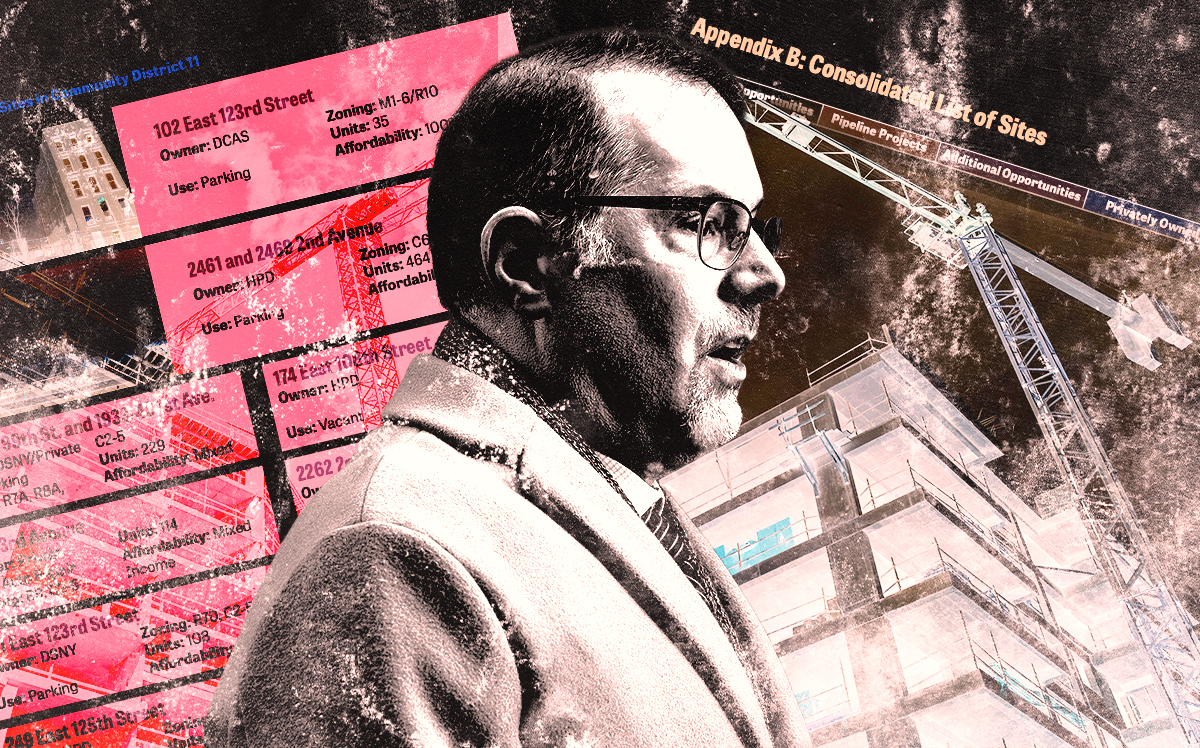Manhattan pol lists 171 development sites, and TRD maps them
Projects, some more hypothetical than others, could yield 73,000 homes

Manhattan has a lot more room for housing, if the government would let someone build it.
A report from Manhattan Borough President Mark Levine identifies development sites that could produce 73,000 apartments. It’s not an exhaustive list, but focuses on parcels that require public action to allow for residential projects.
The 171 opportunities run the gamut, from an air rights transfer to allow 9,000 homes to small lots that would yield just six apartments as-of-right. They include vacant lots, gas stations and parking garages. See a map of them below and a spreadsheet here.
It excludes some developed sites, even if their owners have sought public action to add housing. For example, Lenox Terrace, where the Olnick Organization sought to build 1,600 units only to be denied by the City Council in 2020, is not on the list.
Four sites in Levine’s report account for nearly a quarter of the potential housing. They include a downtown pier used as a heliport by the president of the United States and a vacant lot where owner Stefan Soloviev wants to build an East Side casino.
The fifth largest project envisioned, with 917 units, has already been shelved because of opposition from Harlem Council member Kristin Richardson Jordan: Bruce Teitelbaum’s One45, at Lenox Avenue and West 145th Street. But it could return if Jordan loses her re-election bid this year.
Levine said the report sets a baseline for future discussions about project proposals: “Now if someone says one site isn’t workable for housing, I can say, ‘OK, go find me another one that is.’”
By Wednesday evening, news of the report had reached a community board in Washington Heights and Inwood, where the report identifies 16 development sites, including an 884-unit project by Taconic Partners underway at 410 West 207th Street.
Members of the board’s land use committee suggested devoting its next meeting to the report and drafting a list of alternative development sites. Inwood was rezoned in 2018 despite furious opposition from locals who feared construction and gentrification.
The report does not include landmarked sites, such as 250 Water Street, where a judge recently blocked a 270-unit project, or potential office-to-residential conversions, for which Gov. Kathy Hochul is proposing incentives.
It does, however, focus on projects below 96th Street, where neighborhoods “have tended to not contribute their fair share of new housing,” noted Logan Phares, the political director of pro-housing group Open NY, “despite being the most well resourced areas of the city.”
Levine’s report does not factor in the city’s so-called sliver law, which restricts building heights in some locations. Nor does it delve into solutions to political problems, such as member deference, that frequently slow or stop housing development.
But it does call out — no fewer than six times — the state law limiting the residential floor-area ratio in the city to 12. Hochul and some city officials have supported lifting that cap.
Levine also pledges to reduce the time his office takes to review applications for sites in his report to five days, down from the 30 allowed now. The 25-day difference is not nothing, but the public review process generally takes six or seven months — and typically two years just to begin.
Mayor Adams’ proposal to eliminate environmental reviews for projects under 200 units would apply to 124 sites in the report, affecting more than 10,700 possible apartments.
The report envisions allowing nearly 27,000 new apartments by upzoning parts of Manhattan including West Chelsea, Hudson Yards, the Garment District and Kips Bay, as well as Morningside Heights and Washington Heights above 96th Street.
The manufacturing buildings in Midtown’s Garment District are the most ripe for housing production, according to Levine. “Only 2 percent of buildings in the Garment District are actively being used for garment production,” he said. Yet zoning rules limit residential conversions.
Phares said more funding for city housing agencies, which the report endorses, is “essential to help realize the nine potential rezonings outlined in the report so that agencies can handle them more efficiently and quickly.”




